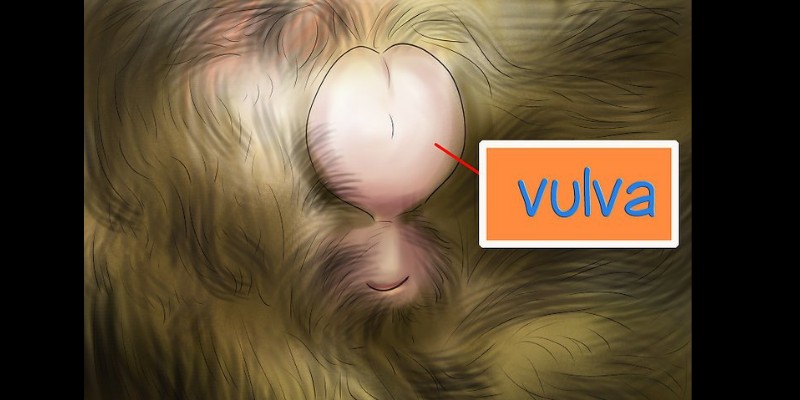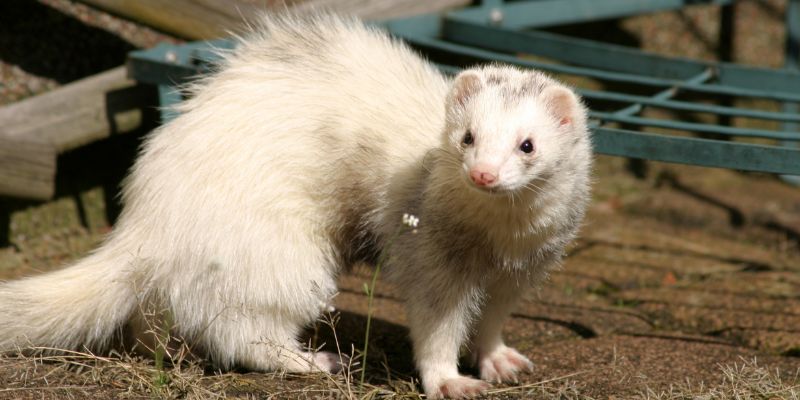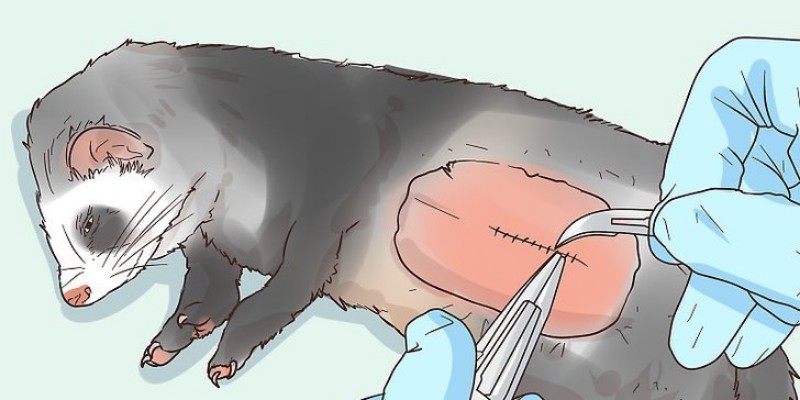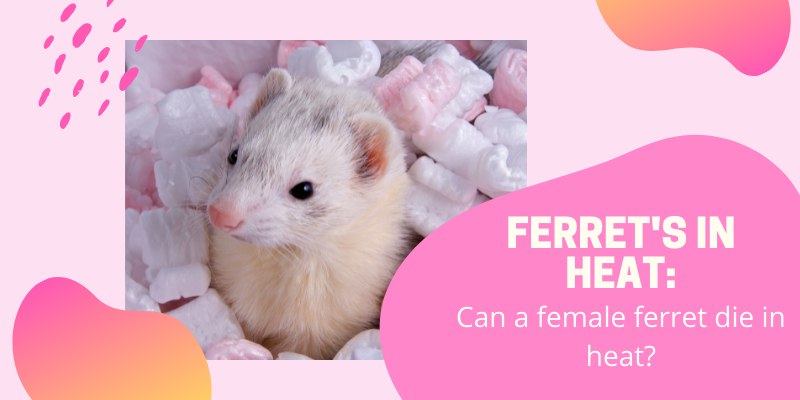Between the months of March-September, as a ferret owner, you may notice both physical and behavioral changes in your little furry friends.
As the owner of three fantastic ferrets, whom I have had for over 3 years, keeping an eye on my Jills (female ferrets) during this period really is a matter of life and death. For first time ferret owners or those new to owning Jills, you may have heard that females can die during heat.
This is totally correct but easily preventable.
If you have unsterilized Jills in your care, during the heat season, they are at risk of developing what is known as aplastic anemia, a serious condition where red blood cells cut off supply to bone marrow potentially having fatal consequences if not addressed.
Steps you can undertake to protect your ferrets include:
- Undergoing sterilization
- Hormone Injections
- Mating with a male
Intervening before the heat season begins can improve the life of your Jills dramatically and save you and your ferrets any worry or stress during this time.
So, with everything you need to know about ferret heat below, keep reading our guide on how to keep your Jills safe and sound during the months of March to September.
Contents
Ferret Heat Cycle
As female ferrets reach sexual maturity around 8-12 months, they will enter heat season at the start of spring until fall.
Oestrus or more commonly known as heat is the period of time in an animal’s reproductive cycle when they are receptive to a male. Ferrets enter heat every year so are known as seasonally polyoestrous species.
Jills will remain in heat if not mated or given medical intervention right up until their season ends. It is during this time that if left unmated or untreated, aplastic anemia can occur leading to potentially fatal consequences and your female could die if left unmated.
It is important to know that some ferrets may enter heat before they reach 12 months of age.
During our Jill’s first year, I was advised by a veterinarian my Jills would be fine without any intervention as he suggested ferrets are more prone to effects after their second season.
However, after one of my Jills, Lilo, became extremely ill weeks after seeing the vet, we decided seasonal intervention was vital, no matter their age.
Signs Your Ferret Is In Heat
In the weeks leading up to the beginning of spring, it is vital that you keep an eye on both physical and behavioral changes in your Jills. The following symptoms are as follows:
- Enlarged//Swollen Vulva
- Weight Loss
- Tiredness/Fatigue
- Thinning Fur
Enlarged Vulva
One of the major signs your ferret is in heat is an enlarged vulva. This is located at the base of the Jill’s body, between their legs and just above their tail. During their heat season, their vulva’s will swell and almost triple in size.

This can lead to your ferret scooting and shuffling across the floor, as the area can be extremely sensitive and sore for them. Try to keep this area clean and tidy for your ferrets as the likelihood of infection is amplified during this time.
Weight Loss
Weight loss is another significant symptom of ferret heat.
Your Jill may lose a significant portion of their body weight during the time heat occurs. It is vital to keep their exercise to a minimum and food intake higher than usual.

To reduce the risk of anemia, feed your Jills raw treats such as diced beef/steak which can help fuel their bodies with vital vitamins and minerals.
Every week, whilst on heat, I feed my two Jills 5-6 chunks of diced beef cut into ferret-size pieces to give their bodies a much-needed nutritional boost.
Extreme Lethargy
You may notice that your Jills become increasingly lethargic during heat.
Their exercise levels tend to drop and they will sleep for longer than usual. This is a completely normal reaction to their season and nothing dramatic to worry about.

However, if you notice your ferret struggling to wake from sleep, more than usual, then seek veterinary treatment as soon as possible.
Ferrets tend to fall into a “Dead Sleep” quite regularly, which is normal behavior, however, during heat, extreme lethargy can disguise itself and be left unnoticed until it’s too late.
How to Treat Ferret Heat
Heat can be treated mid-season and prevented before it occurs in spring.
It is recommended to prevent the onset of heat rather than to treat the symptoms. However, if you are a first-time ferret owner and unsure of what is happening to your ferret and notice symptoms such as their enlarged vulvas and weight loss, treating heat is better than letting nature take its course.
If you believe your ferret is in heat, it is vital to seek veterinary treatment as soon as possible as your female ferret could die without medical intervention.
However, there are more cost-effective and natural ways of treating your ferrets without seeing a veterinarian whatsoever.
As ferrets are susceptible to the effects of heat from lack of mating, the most natural and effective way of treating your Jill (or Jills) is to mate them with a vasectomized hob.
This is a male ferret that can no longer produce young when mated with a female.
Asking local ferret groups or even purchasing a vasectomized hob, for the sole purpose of mating, really could save your Jill’s life year upon year.
How To Prevent Ferret Heat
As the age-old saying goes, prevention is always better than cure.
As mentioned above, you can prevent your Jills from entering heat by mating with a vasectomized hob.
However, if you’re like me and don’t want your Jills exposed to a mate as ferret mating can be extremely aggressive and can often injure Jills in the process, then veterinary treatment may be more suited to your furry friends.
There are two main treatments to help prevent the onset of heat in your Jills.
- Spaying your Jills – This involves removing both the uterus and the ovaries and is extremely similar to the procedures done on our cats and dogs.

However, as they are dramatically smaller in size, this procedure can be very intrusive and dangerous for ferrets but will prevent heat symptoms for the remainder of their life and can reduce the smell from sweat glands meaning no more smelly spells.
- Hormone Injection – This is a non-intrusive treatment for your little furry friends and can be done with a simple trip to the vet. Prior to heat, or shortly after, a hormone injection, proligestone, can be given to your Jills to bring them out of heat. This is commonly referred to as the “Jill Jab”.
This is my top choice for treating my two Jills. Every year, around the beginning of March, they are taken to the vets and within the blink of an eye, their Jill Jab is done keeping them safe and sound for the next few months.
However, it is important to note that there are some Jills who may require more than 1 jab during the season but this is very rare and is often no more than one more treatment. This reduces the likelihood of anemia without any intrusive surgeries or worries about aggressive mating.
FAQs:
Caring For Your Jills
As a long-time ferret owner, caring for my Jills during March-September has become part of their seasonal love and care. Having a partner in the veterinary field and researching ferret care during their development helped me understand exactly what I needed to do to care for my furry friends.
Although this time can be scary and worrying, reading the guidance above, taking the steps mentioned, and having a conversation with your veterinarian can prepare you for the process of caring for your ferret during the heat cycle.
There is no one prevention that suits all ferret owners so deciding on the course of treatment to suit you and your Jills is what you must follow. Whether it be spaying, mating, or hormone injections, our guide gives you a glimpse into what you need to know to care for your ferrets this spring.
Interested in more useful ferret tips? Check out our guides below!:






